
by Scott Frederick | May 28, 2025 | News
This is something we recently compiled in response to an external media inquiry, so we thought we’d share it here as well.
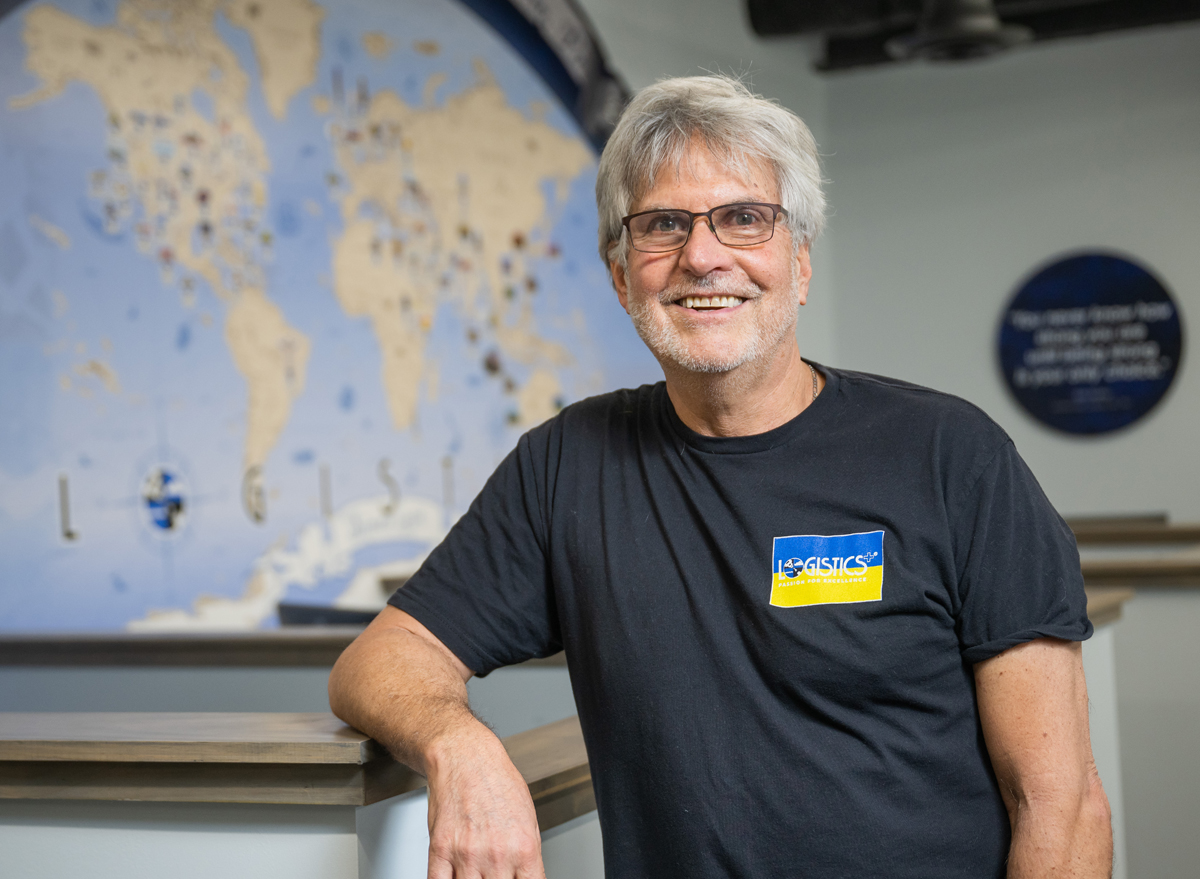
Introduction
In the world of supply chains and global logistics, a few companies manage to stand out. Fewer still can trace their success to a story as personal — and unlikely — as that of Logistics Plus.
At the heart of it is Jim Berlin: a guy who didn’t come up through boardrooms or business schools, but through real work, real risks, and a relentless belief that there had to be a better way to do things.
The following is by Jim Berlin, Founder & CEO of Logistics Plus, Inc. (with some input from his personal AI chatbot 😀)
The Reluctant Logistics Revolutionary
I didn’t set out to build a company. I was just trying to make a living — driving trucks, taking odd jobs, figuring things out as I went. I didn’t have a fancy degree. What I did have was curiosity, grit, and a belief that most problems had solutions if you looked at them the right way.
Over the years, I worked in just about every part of logistics — from the ground floor up. Along the way, I learned that moving stuff from Point A to Point B wasn’t just about trucks and warehouses — it was about solving puzzles. It was about people. It was about trust.
By the early 1990s, I had built a reputation for taking on messy, complicated problems — and actually enjoying the challenge.
In 1996, came the real turning point: GE Transportation in Erie, Pennsylvania needed help managing transportation logistics during a big outsourcing shift. A lot of people thought the project was doomed. I thought it sounded like fun.
I set up shop with little more than a phone, a borrowed desk, and an idea: do whatever it takes to get the job done — and do it better than anyone expects.
That was the start of Logistics Plus.
The Birth of Logistics Plus
At the beginning, it was just a few of us squeezed into a tiny office inside GE’s massive site. The only promise we made was simple: Passion for Excellence.
It wasn’t just a slogan. It meant we were going to care more, work harder, and figure out smarter solutions than anyone else.
The “Plus” in Logistics Plus mattered, too. It stood for creativity, service, and the mindset that no matter what a customer needed, we were going to find a way — and then add a little extra.
Every customer felt like our only customer.
No job was too small. No detail was too minor.
That approach became the foundation of everything we built.
Vision and Core Values
I never wanted Logistics Plus to be a place where people just punched a clock. I wanted it to be a place where people actually liked what they were doing — and took pride in doing it well.
Our core values grew naturally out of that spirit:
- Passion for Excellence: Find a way to be better today than yesterday.
- Global Mindset: Solve problems anywhere, anytime, with a local touch.
- Entrepreneurial Spirit: Think like an owner. Take initiative.
- Customer Focus: Build partnerships, not transactions.
- Integrity and Transparency: Do the right thing — even when nobody’s looking.
Build a team of people who care, trust each other, and love the work — and the results take care of themselves.
Solutions That Redefined an Industry
What started with GE grew quickly.
We took on more clients, bigger challenges, crazier projects — and just kept figuring it out.
Today, Logistics Plus offers full-service supply chain solutions, including:
- Freight Management: Truckload, LTL, ocean, air, rail — you name it.
- Warehousing & Fulfillment: A growing network for storage, distribution, e-commerce, and installations.
- Global Logistics: International freight forwarding and project cargo.
- Supply Chain Consulting: Helping clients rethink and optimize everything.
- Technology Solutions: Creating user-friendly TMS, WMS, and other logistics applications.
One thing that’s never changed: we specialize in tough stuff — oversized, high-stakes, complicated projects.
If it’s easy, it’s probably not for us.
Global Growth and Recognition
From a borrowed desk in Erie, we’ve grown into a global organization, fast approaching one billion in global sales, with offices in over 50 countries and a network that spans six continents.
Along the way, we’ve earned recognition like:
- EY Entrepreneur of the Year (and a spot in its Hall of Fame)
- Inc. 5000 Fastest-Growing Companies (multiple years)
- Top 3PL Provider by industry publications
- Great Place to Work Certification (year after year)
We’re proud of the awards — but prouder of what they stand for: a team that never forgot its roots, no matter how far we’ve come.
The Culture Behind the Success
Ask anyone at Logistics Plus what makes us different, and you’ll hear it: culture.
We’re not a top-down corporate machine. We’re a tight-knit group that values creativity, individuality, and trust.
Anybody here can walk into my office with an idea or a problem — and they do.
In a world racing toward automation and AI, Logistics Plus stays human.
Our customers aren’t just numbers. They’re relationships. They’re friends.
Looking to the Future
Nearly three decades in, and Logistics Plus is just getting started.
We’re doubling down on what’s always made us different: creativity, flexibility, and a willingness to take on the tough stuff others won’t touch.
We’re expanding our global reach, building smarter supply chains, and helping our clients grow by finding solutions where others only see obstacles — taking away headaches so they can focus on running their businesses.
The world keeps changing fast — and while we’ve always embraced cutting-edge technology to stay sharp and competitive, we’ve never lost sight of what matters most.
At Logistics Plus, we’re trying to make sure that even as we stay human — building real relationships and solving real problems — we also have all the high-tech tools our customers need, and always will.
At the core, our mission stays simple:
Solve problems. Create opportunities. Have fun doing it.
Conclusion: A Legacy of Possibility
From a single desk in Erie to a worldwide network, the story of Logistics Plus proves that vision, heart, and persistence still matter.
We didn’t grow because of some master plan.
We grew because we cared.
We solved problems.
And we always — always — tried to do just a little bit more.
The best part?
We’re still just getting started.
Onward!
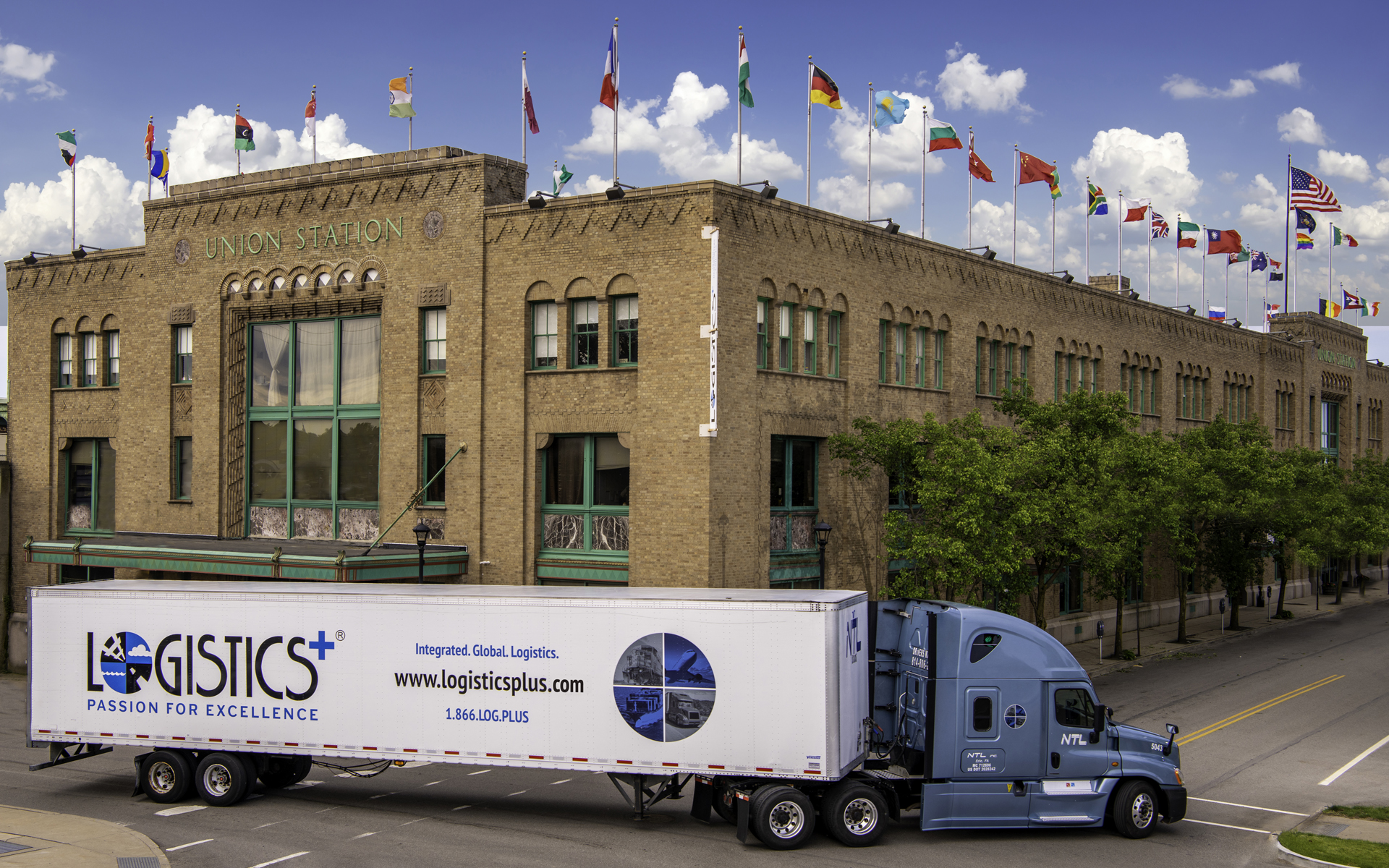
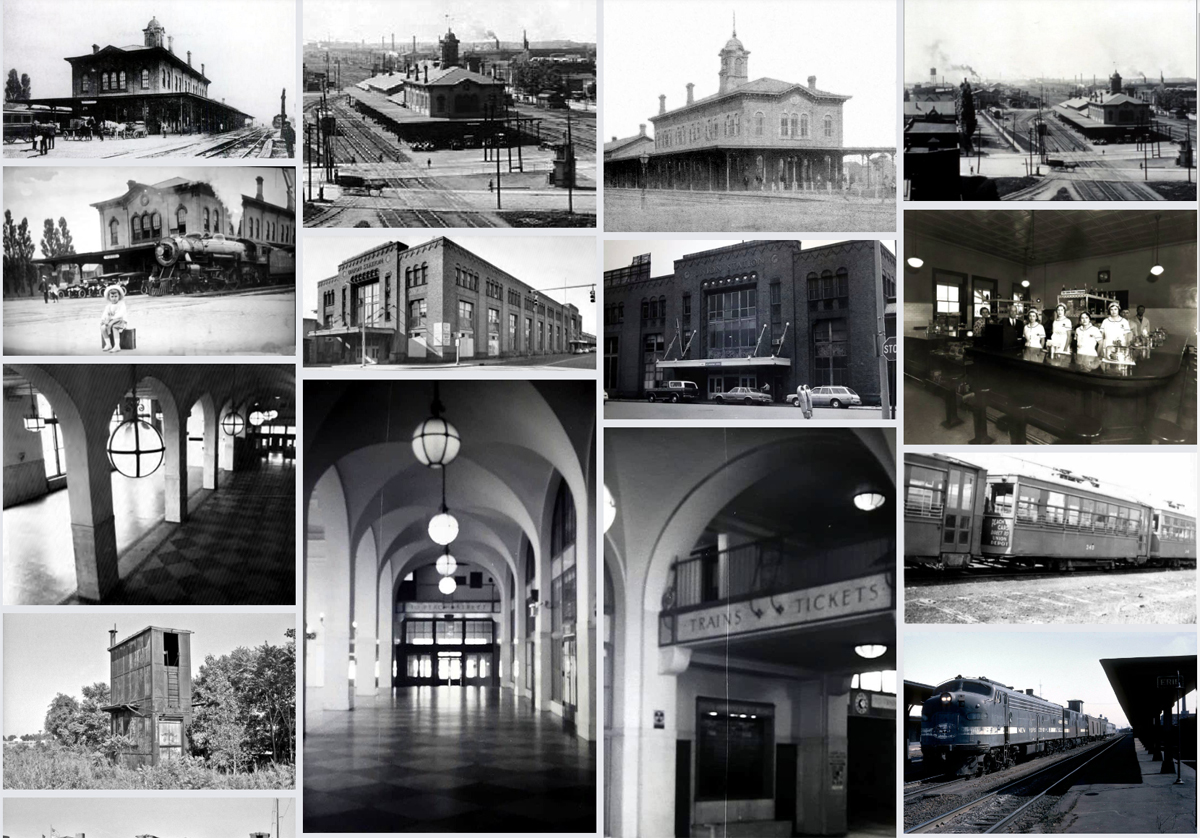
by logisticsplus | Mar 28, 2023 | News
We’d like to give a special thank you to the folks at Erie’s History and Memorabilia for documenting Erie’s rich history in photographs and stories. Check out this Facebook photo album of Erie’s history union train station, home to the Logistics Plus global headquarters since 2003. View the album and follow them online at https://www.facebook.com/eriehistorymemorabilia.
Here is a reprint of the entire story that is included with the album.
**************************
 The first railroad station in Erie was established in 1851, but it was soon replaced with a Romanesque-Revival style Union Depot that was built around 1865 at 14th Street between Peach and Sassafras Streets. Four railroads provided service: the Philadelphia and Erie Railroad and the Erie and Pittsburgh Railroad, which became parts of the Pennsylvania Railroad (PRR); and the Buffalo and Erie Railroad and the Cleveland and Erie Railroad, which became part of the Lake Shore and Michigan Southern Railway and eventually a part of the New York Central Railroad (NYC). In its heyday, the station served nearly 52 passenger trains a day. Before dining cars were common, passengers would off-board the train for extended stops at the station’s grand restaurant before continuing on their journeys.
The first railroad station in Erie was established in 1851, but it was soon replaced with a Romanesque-Revival style Union Depot that was built around 1865 at 14th Street between Peach and Sassafras Streets. Four railroads provided service: the Philadelphia and Erie Railroad and the Erie and Pittsburgh Railroad, which became parts of the Pennsylvania Railroad (PRR); and the Buffalo and Erie Railroad and the Cleveland and Erie Railroad, which became part of the Lake Shore and Michigan Southern Railway and eventually a part of the New York Central Railroad (NYC). In its heyday, the station served nearly 52 passenger trains a day. Before dining cars were common, passengers would off-board the train for extended stops at the station’s grand restaurant before continuing on their journeys.
The first station was demolished and replaced by a new depot, one that was redesigned in the Art Deco style of the 1920s by architects Alfred T. Fellheimer and Steward Wagner, the new station was dedicated and opened for business on December 3, 1927. Some of the features of the old station were replicated in the new design, such as the number of external panels and windows and the east facade of the building. The station had a hexagonal rotunda, which was the station’s waiting room with eight ticket windows and a baggage window. The main concourse was quite large and contained retail space, including a Union News outlet, a barber shop, and other concessions. The redesign was part of a project to raise the railroad right-of-way onto an embankment through the city to eliminate the many grade crossings. The station is remarkably intact; all of the original building is still in place. Recent restaurant and office development inside the building did not make any substantial structural changes to the station.
The original platforms were approximately 450 feet long, made of cast-in-place concrete, and were low-level, with nearly full-length butterfly-style canopies made of steel frames and wood roof decking. There were four baggage service elevators going from the baggage handling area to the platforms.
The NYC had four tracks (Tracks 1 to 4) on two island platforms, plus an express loading track adjacent to the station building and a run-through track between Tracks 1 and the express loading track. The PRR had two tracks (Tracks 5 and 6) on one island platform, plus a separate short platform for baggage, mail, and express handling. The tracks were located above grade, with a pedestrian subway tunnel providing access to the platforms via stairways to the platforms above. In 2001, Track 4 was turned over to the Norfolk Southern Railway (NS) as part of a track relocation project, which eliminated 1½ miles of NS street running trackage on 19th Street through the city. This operational change did not materially impact the station.
When the new station was opened in 1927, the NYC provided the majority of service. Trains went west to Cleveland, Toledo, Chicago, Cincinnati, and St. Louis and east to Buffalo, Albany, New York and Boston. The station was located on the NYC Chicago-New York main line, also referred to as the “water-level route.” The famous NYC 20th Century Limited ran through Erie Union Station every night at high speed but did not stop. In the 1960s, the NYC ran approximately eight trains a day in each direction through Erie. Many additional trains were run in the preceding years, particularly during World War II. This was gradually truncated to approximately four trains a day towards the beginning of Amtrak.
Conversely, the PRR ran trains south from Erie to Pittsburgh and southeast from Erie to Harrisburg, Philadelphia, and Washington. Service to Pittsburgh was discontinued in 1946, and service to Philadelphia was discontinued on March 27, 1965. In later years, PRR service consisted of only one train a day each way to Emporium, Pennsylvania, where the cars were connected to a Buffalo/Harrisburg train for the continued journey. The PRR train typically consisted of a baggage-RPO car, a coach, and a sleeper which was operated by the Pullman Company. The last PRR train was numbered No. 580 (southbound) and No. 581 (northbound).
While all NYC trains were run-through trains, the PRR had switching operations at the station because all of the PRR trains terminated and originated in Erie. Typically, a PRR switch crew would pick up the train and take it about a mile east to the former Ash Street Wye to turn the train so the seats were pointed in the facing direction of the train. The motive power would cut off and proceed east to the PRR engine terminal on 18th and Wayne Streets for servicing and turning. That was also the crew reporting location. At the station, the PRR had a Porter who cleaned out the train and prepared it for its return run. The PRR also had a steam boiler in the station manned by a full-time fireman to provide steam heat for the cars to keep them warm during the day in cold weather. Steam hoses were located in the center of the PRR station tracks for the connection to the cars. Lastly, since the Pullman Company operated the sleeping car service, there was likely an office space for Pullman employees to conduct their administrative business.
The level of passenger service continued after the Penn Central (PC) merger in 1968 between the PRR and NYC. PC later became Conrail in 1976, and in 1999 Conrail’s Erie operations became part of CSX Corporation. However, the PC trains only ran until the beginning of Amtrak in 1971. Prior to the start of Amtrak, PC was running approximately four trains per day. In spite of that, Amtrak reduced the service to one train a day serving Union Station between midnight and 6 AM, thus greatly reducing the quality and level of service. Shortly after that, the one train was discontinued, leaving the city of Erie without passenger service for several years. Service then resumed in 1975 with the Lake Shore Limited service, still serving Erie between two o’clock and seven o’clock AM. Currently, there are two trains each day, greatly underserving the potential travel market that may be available in Erie. Despite this, Union Station still sees over 8,000 passengers a year pass through its doors.
Two other railroads served Erie but had separate depots; they never shared Union Station. The Bessemer and Lake Erie Railroad ran trains to Greenville, PA, and Pittsburgh; and the New York, Chicago, and St. Louis Railroad (the Nickel Plate Road) had service to Chicago and Buffalo. Bessemer & Lake Erie service was discontinued in 1955, and Nickel Plate service (which became Norfolk & Western in 1964 and later Norfolk Southern) was discontinued in 1965. The Bessemer depot was located at 12th, and Sassafras Streets, and the Nickel Plate Depot was located at 19th and Holland Streets. Over time, both of those depots were demolished. There is currently no ticket sales or baggage handling available.
During World War II, the Bliley Electric Company operated a small defense-related factory on the second floor of the station, where local women worked all three shifts using grinding machines to fashion semiconductors out of galena for use in the cat’s whisker detector of crystal radios. The raw chunk lead ore was heaped in the rail yard, and the entire operation was guarded by soldiers with Great Danes.
In the 1960s and 1970s, the station was also used as a crew change point for NYC (and later PC) freight crews between Cleveland and Buffalo. This replaced a former crew change point in Lawrence Park Township, just east of Erie, and the site of a former steam engine maintenance facility for the New York Central. CSX no longer uses Erie as a crew change point.
The United States Post Office operated Railway post office (RPO) service on both the NYC and PRR through the station. There was an underground tunnel that went under 14th Street from the station to the main Erie Post Office for the transfer of mail.
Restoration
Erie-based Logistics Plus purchased the then-vacant railroad depot in 2003 and began renovations to make the historic building its corporate world headquarters. Logistics Plus occupies the second and third floors of the building and leases sections to other local businesses. Logistics Plus has completed mostly restorative work to the building, with the minor changes being carpeting, drop ceilings, and fluorescent lighting in offices. In what was the main concourse of the station, new dividing walls separated tenant spaces and the on-site microbrewery from the Amtrak platform.
The largest physical change came with the addition of flag poles and flags that Logistics Plus flies in honor of the countries from which Logistics Plus employees come.
**************************
FYI, this is Union Station today:
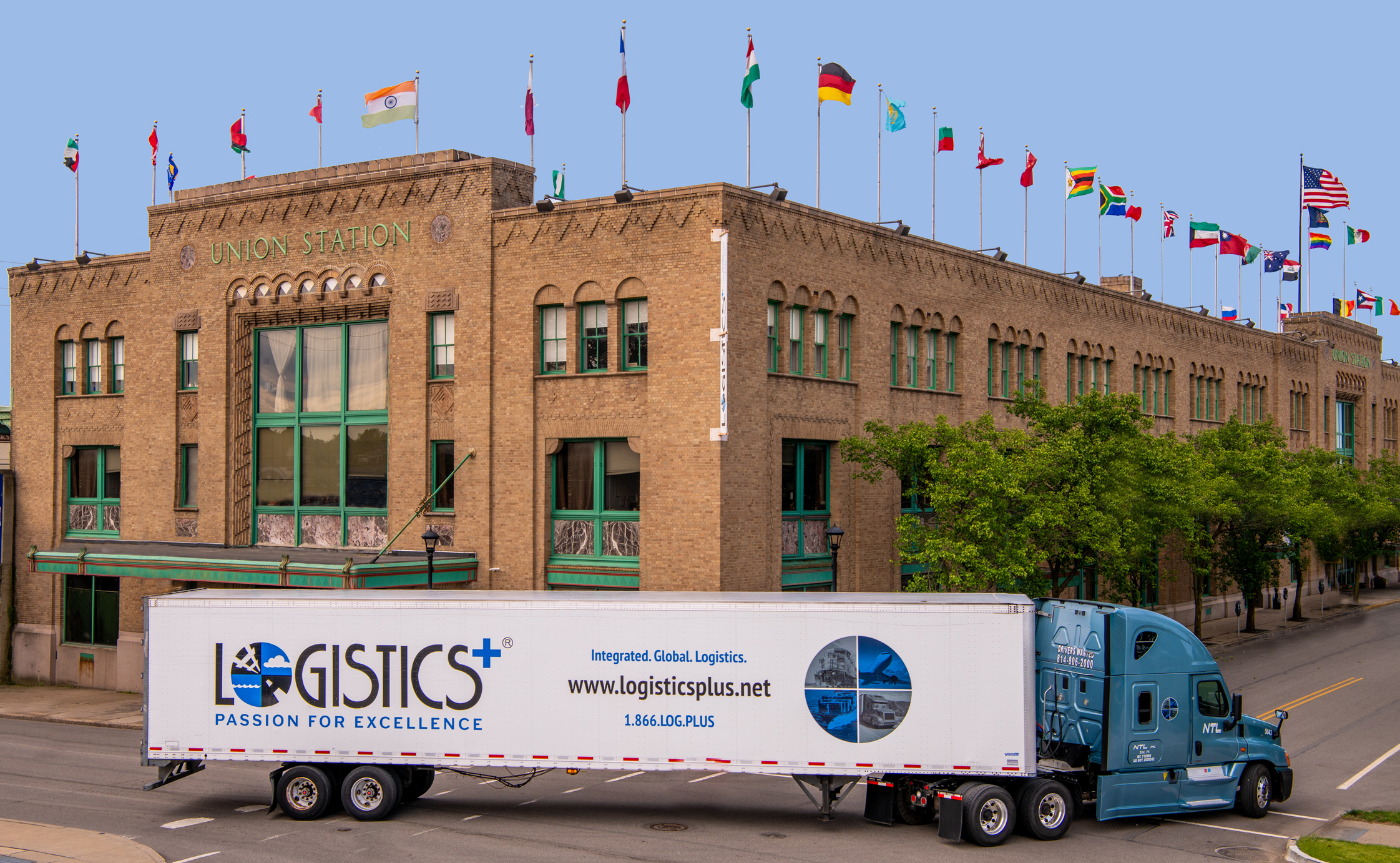
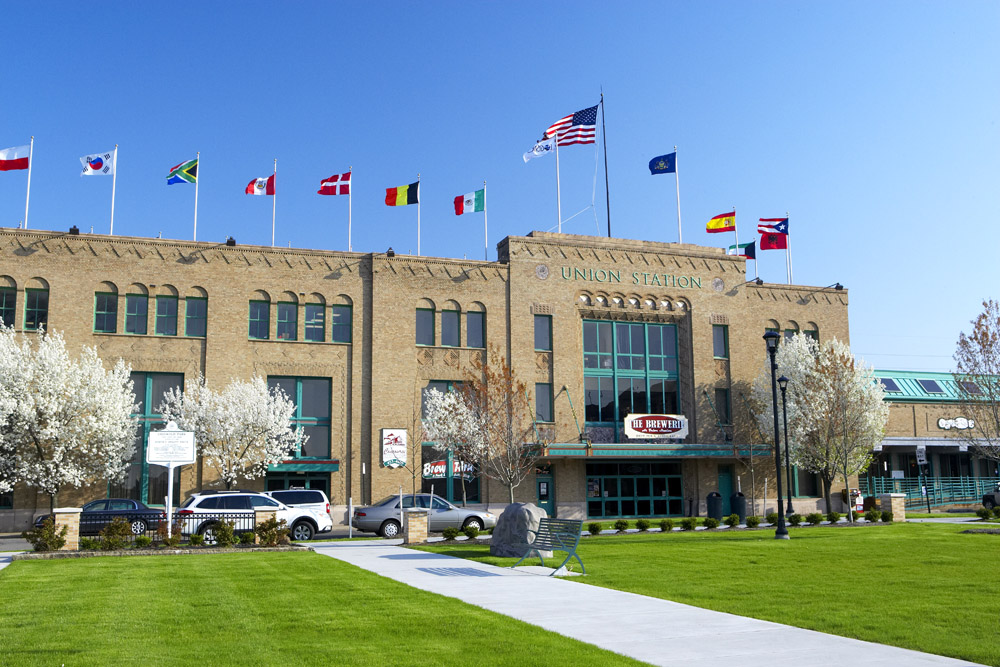
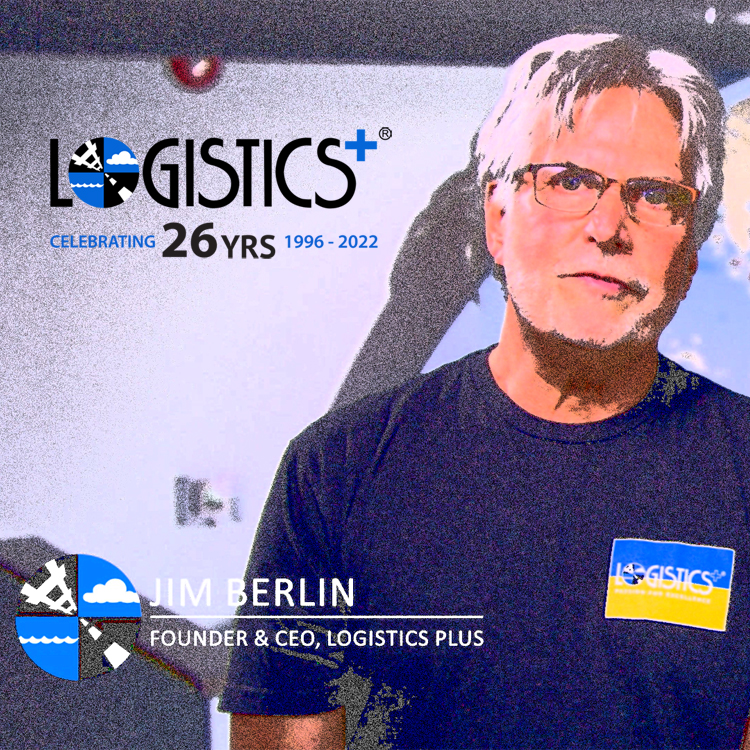
by logisticsplus | Aug 22, 2022 | News
Logistics Plus is celebrating its 26th Anniversary this month. As many know, Logistics Plus would not be the successful, global company it is today without the entrepreneurial spirit, practical leadership, and daily coaching from our Founder & CEO, Jim Berlin.
This is the full 11-minute interview (previously shared as 14 separate video vignettes) of JB’s thoughts on leadership, entrepreneurship, growth, and more. The interview was for the upcoming EY Entrepreneur of the Year Program that is intended to recognize past winners (Jim won a regional award back in 2004).

by logisticsplus | Aug 21, 2022 | News
Logistics Plus is celebrating its 26th Anniversary this month. As many know, Logistics Plus would not be the successful, global company it is today without the entrepreneurial spirit, practical leadership, and daily coaching from our Founder & CEO, Jim Berlin. So, each of the next 14 days, we will share recent video footage of JB’s thoughts on leadership, entrepreneurship, growth, and more. We recorded the videos for a different purpose, but in the spirit of LP’s Anniversary, they can certainly be enjoyed by all.
Video #14 of 14 … “My Proudest Accomplishment as an Entrepreneur”

by logisticsplus | Aug 20, 2022 | News
Logistics Plus is celebrating its 26th Anniversary this month. As many know, Logistics Plus would not be the successful, global company it is today without the entrepreneurial spirit, practical leadership, and daily coaching from our Founder & CEO, Jim Berlin. So, each of the next 14 days, we will share recent video footage of JB’s thoughts on leadership, entrepreneurship, growth, and more. We recorded the videos for a different purpose, but in the spirit of LP’s Anniversary, they can certainly be enjoyed by all.
Video #13 of 14 … “I’ve Tried to Learn About Leadership from the People I’ve Met”







